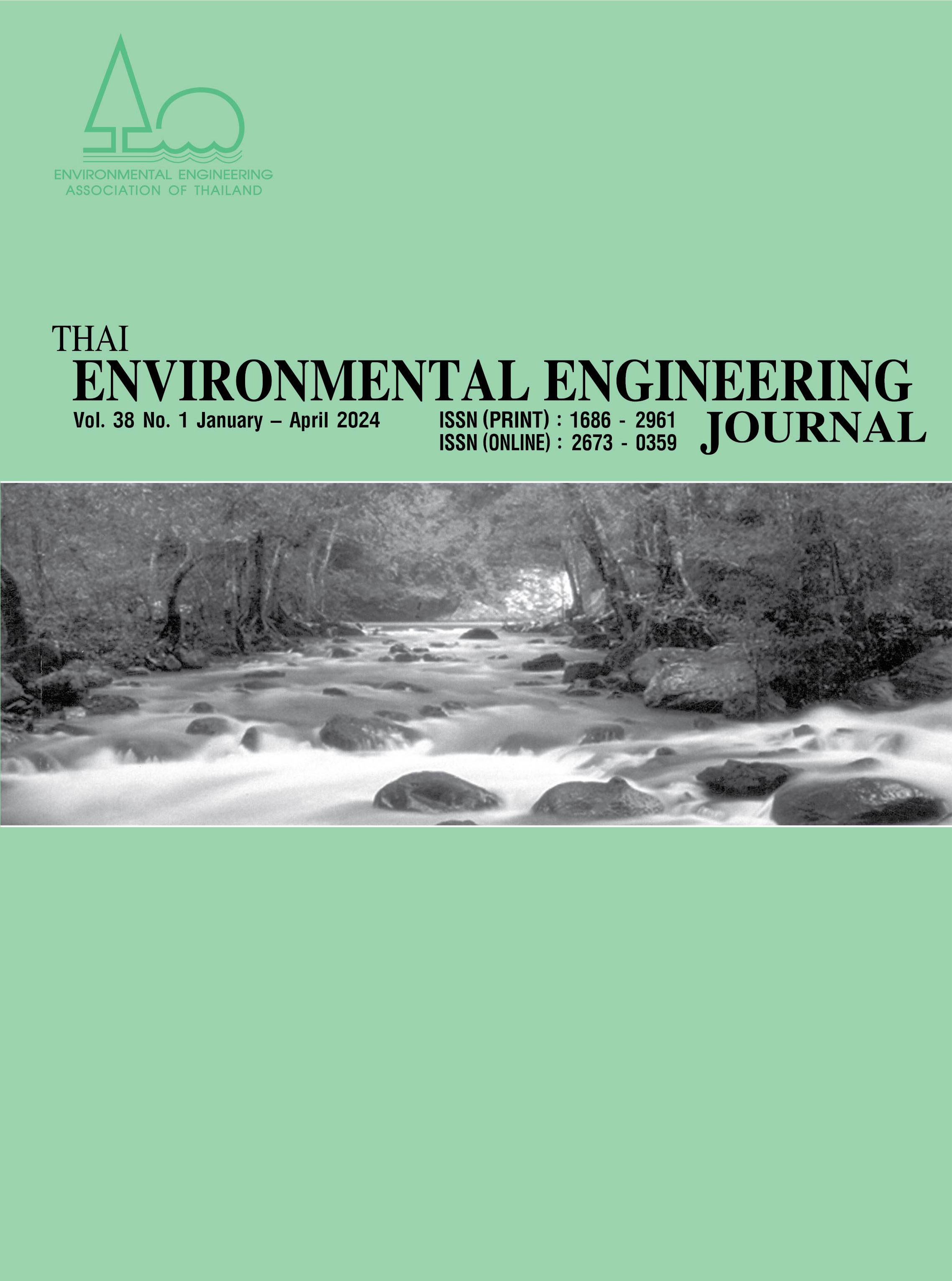Evaluation of Land Use Effects on Surface Water Quality in the Upper Yom River Basin, Phayao Province
Main Article Content
Abstract
Although water quality in Upper Yom River Basin, Part 1, has been monitored, it has not yet covered land use patterns. Therefore, this study aims to monitor and evaluate surface water quality from land use in Upper Yom River Basin, Part 1, Pong District, Phayao Province, by classifying land use in order to collect specific water samples and analyze them. Physicochemical and biological water quality found that water quality in lower Yom watershed was mostly within the water quality standards for surface water sources, with the highest TCB and FCB detected in dense residential areas. As for the rural conservation and agricultural areas along the Khuan, Ngim, and Yom rivers, TCB and FCB were detected in low amounts, but there were high levels of NO3-, indicating the result of farmers' use of chemical fertilizers and surface runoff into natural rivers. This affects the assessment of the overall status of Upper Yom River Basin, Part 1, at the Warning level (mean score = 2.92), showing that the water quality has begun to deteriorate from its common condition, requiring monitoring of the EC, TCB index., Turbidity, FCB and PO43- periodically and selectively to keep up to date with situations that may occur in the future.
Article Details
References
HAII (Hydro and Agro informatics Institute). 2018. Report on basic information for 25 river basins. Bangkok: TEAM Consulting Engineering and Management PCL.
Siriwan Laptuplatong. 2023. Systematic management of spatial water resources in the Yom River Basin. Office of Natural Resources and Environmental Policy and Planning. http://env_data.onep.go.th/blogs/subject/view/14, 24 February 2024.
Ding, L., Chen K.L., Cheng S.G. and Wang X. 2015. Water ecological carrying capacity of urban lakes in the context of rapid urbanization: A case study of East Lake in Wuhan. Physics and Chemistry of the Earth, Parts A/B/C, 89–90: 104–113.
Leh, M., Bajwa, S. and Chaubey, I. 2011. Impact of land use change on erosion risk: An integrated remote sensing, geographic information system and modeling methodology. Land Degradation & Development. 24(5): 409-421.
Wu, J. and Xie, H. 2011. Research on characteristics of changes of lakes in Wuhan’s main urban area. Procedia Engineering. 21(33): 395-404.
Issaka, S. and Ashraf, M.A. 2017. Impact of soil erosion and degradation on water quality: a review. Geology, Ecology, and Landscapes. 1(1): 1-11.
APHA. 1992. Standard methods for the examination of water and wastewater. 18th Edition, American Public Health Association (APHA), American Water Works Association (AWWA) and Water Pollution Control Federation (WPCF), Washington DC.
US.EPA. 1971. Method 352.1: nitrogen, nitrate (colorimetric, brucine) by spectrophotometer. National Pollutant Discharge Elimination System (NPDES) and Safe Drinking Water Act (SDWA), Washington DC.
Popradit, A. 2015. Impact of community existence on surrounding protected forest areas: a case study of Phu Kao-Phu Phan Kham National Park (Doctoral dissertation, Chulalongkorn University).
National Environment Board, 1994. Announcement of the National Environment Board No. 8 (1994) on setting water quality standards in surface water sources. Announced in the Royal Gazette, Volume 111, Section 16, dated February 25, 1994.
World Health Organization (WHO). 1996. Guidelines for Drinking Water Quality. 2nd Edition, World Health Organization, Geneva.
Pitt, R., Maestre, A. and Morquecho, R. 2004. The national stormwater quality database (NSQD, version 1.1). 1st Annual Stormwater Management Research Symposium Proceedings.
Pollution Control Development. 2010. Procedures for collecting water samples from water sources. Bangkok: Ministry of Land Resources and Environment.
US. EPA. 1999. Integrated Risk Information System (IRIS). http://www.epa.gov/iris/subst/0076.htm.
Ashbolt, N.J., Grabow, W.O.K., and Snozzi, M. 2001. Indicators of microbial water quality. In: Fewtrell L. and Baryram J. editors, Water Quality: Guidelines, Standards and Health. London: IWA Publishing, pp. 289-316.
Singh, B. and Craswell, E. 2021. Fertilizers and nitrate pollution of surface and ground water: an increasingly pervasive global problem. SN Applied Sciences. 3: 518. DOI:10.1007/s42452-021-04521-8.
Chen, D., Shen, H., Hu, M., Wang, J., Zhang, Y. and Dahlgren, R.A. 2018. Legacy nutrient dynamics at the watershed scale: principles, modeling, and implications. Advances in agronomy. 149: 237-313.
Vero, S. and Ascott, M. 2022. Nitrate Transport in Agricultural Systems. In Nitrate Handbook (pp. 45-70). CRC Press.
Chetia, R., Sawasdee, V., Popradit, A. and Hasin, S. 2021. Alteration of Spatial Pollution Compounds to Eutrophication Phenomenon of Small-Scale Area under Corona Virus Disease Circumstances. Journal of Environmental Management and Tourism. 12(3): 613-620.
Intasin, S., Srakat, N., Baothongchan, W., Inthakanog, S., Pratumchad, P., Pechrsan, S. and Popradit, A. 2023. Participation in Household Hazardous Waste Management: A Case Study of the Dam Community, Northeast of Thailand. Journal of Environmental Management & Tourism. 14(1): 44-51.


